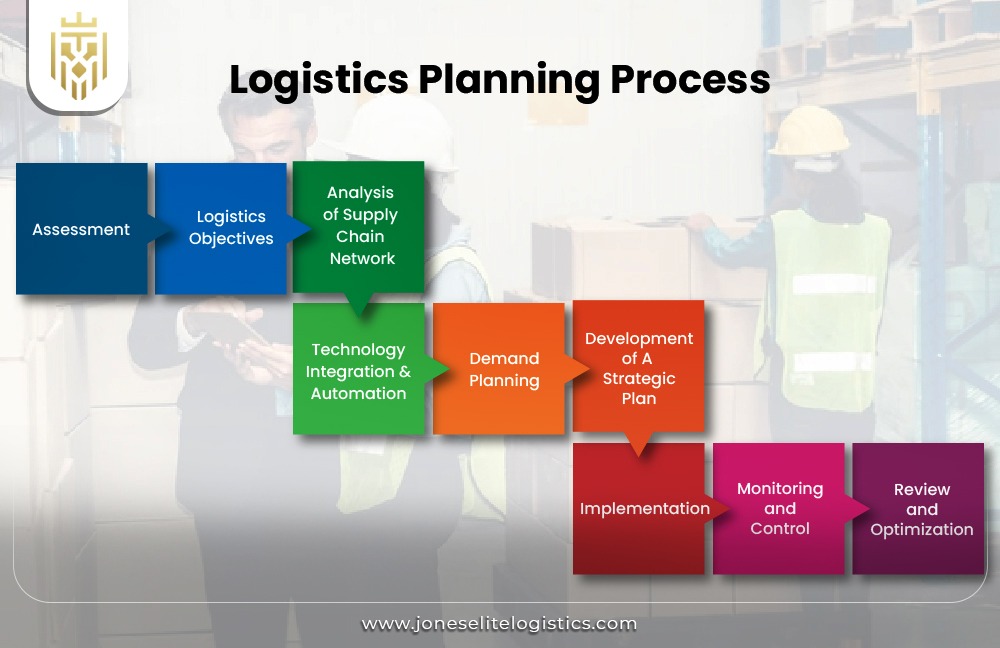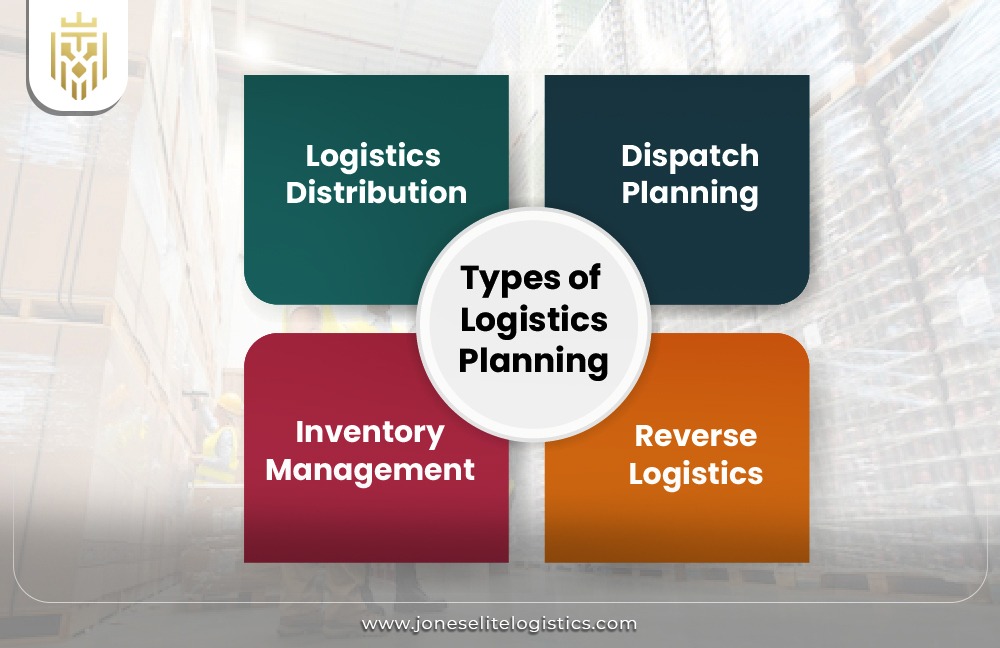What is Logistics Planning?
Logistics planning represents a systematic approach to handle product movements alongside storage between suppliers and consumers. The system enables perfect coordination between transportation and warehousing operations as well as inventory management which leads to better supply chain performance. A strategic logistics planning process ensures optimal resource use while decreasing expenses and delivering better reliability to enhance business operations.
Why Logistics Planning is Important for Ecommerce?
Streamlined inventory combined with transportation and order fulfilment operations through logistics planning enables e-commerce to provide timely deliveries. Logistics route planning enables businesses to cut operational expenses while delivering superior satisfaction to their customers. A well-developed supply chain planning approach enables businesses to fulfil customer demands which results in higher revenue and superior competitiveness within rapidly evolving digital markets.
Logistics Planning Process:
The logistics planning process includes assessment, logistics objectives, analysis of supply chain network, technology integration and automation, demand planning, development of a strategic plan, implementation, monitoring and control, and review and optimization.

Assessment:
Organizations should conduct a complete logistics planning evaluation of inventory systems alongside supply chain designs and warehousing operations to detect operational weaknesses. Businesses improve transportation performance together with cost reduction through the implementation of strategic logistics planning. The process of effective assessment enables smooth product delivery and faster shipment times together with better operational performance.
Logistics Objectives:
The main goal of logistics planning is to optimize transportation systems and inventory processes and warehousing infrastructure to achieve customer satisfaction efficiently. Organizations using a properly structured strategic logistics planning system achieve both cost reductions and swift delivery services. Business goals are met with better service quality while reducing risks and building supply chain resilience when logistics objectives are aligned well.
Analysis of Supply Chain Network:
To evaluate a supply chain network, companies should study supplier selection, warehouse distribution, transport options and customer placement. Supply chain planning improves product movement which lowers expenses while improving delivery quality. Proper logistics route planning helps to run operations without problems while meeting market needs faster.
Technology Integration and Automation:
Using technology in logistics planning helps businesses manage their inventory better and fulfil orders automatically while running transportation operations. Logistics route planning becomes more effective through advanced software which decreases delays and enhances delivery precision. Businesses leveraging automation in strategic logistics planning systems get better performance from their operations with cost savings and real-time supply chain visibility.
Demand Planning:
Supply chain planning relies on sales data analysis to predict future customer demands. Well-managed supply chains maintain the right number of products to avoid stock-out situations and inventory clutter. When organizations predict customer demand well they can optimize their distribution system to match production output with customer orders successfully.
Development of A Strategic Plan:
Creating a strategic logistics plan needs market analysis together with transportation improvements and better inventory management systems. A well-designed logistics route planning method helps save time and reduces operational costs. Companies reach their business aims and grow their operations when they connect their logistics plans to their business targets.
Implementation:
A logistics plan implementation becomes successful when organizations set clear targets, examine distribution channels and bring technology into their systems. Companies achieve better freight management results and faster delivery when they use FCL shipping and other methods that work for them. Efficient system usage helps businesses respond faster to market changes and operates their resources more effectively.
Monitoring and Control:
Logistics planning needs regular monitoring and control of essential performance measurements such as inventory numbers and shipment schedules. Logistics route planning integration lets companies find transportation issues fast and make better transportation decisions. Tracking effectiveness helps supply chains follow their business targets to achieve better results.
Review and Optimization:
The frequent reviews of logistics operations helps discover ways to optimize warehouse functions along with product handling and delivery networks. Supply chain planning helps organizations design better logistics systems to save money and run operations better. Efficient operational management helps customers receive their orders faster while making both them and the company grow steadily.
Types of Logistics Planning:
Logistics planning includes inventory management, logistics distribution, dispatch planning, and reverse logistics to maintain dependable supply chain delivery.

Inventory Management:
The best logistics planning for inventory control needs demand prediction plus goods and returns handling processes. A supply chain plan helps companies balance their stock and save money on warehousing costs. A properly organized stock system helps deliver products to customers without interruptions.
Logistics Distribution:
A strategic logistics distribution plan uses smart storage and transport methods to move products safely from manufacturers to end-users. Companies benefit from FCL shipping by making cheaper bulk deliveries through a more efficient supply network. By giving customers what they need fast enough logistics distribution allows product availability and shipment accuracy.
Dispatch Planning:
Optimizing logistics transportation routes allows dispatch scheduling to activate at the right moments and keep deliveries on schedule. Placing shipments on ideal vehicles and routes makes operations both more affordable and dependable. The proper setup of dispatch operations makes our supply chain work better and delivers orders on time.
Reverse Logistics:
By handling returned items for repair and recycling companies optimize product delivery routes. When businesses strategically plan their logistics for returns they both lower expenses and make better customer services happen. Running reverse logistics operations effectively builds sustainability and keeps customers loyal to a brand.
Benefits of Logistics Planning:
Logistics planning enhances risk mitigation, inventory control, market responsiveness, and customer service by optimising transportation, warehousing, and supply chain efficiency. The system cuts expenses while enhancing order precision and protects our business operations by making smart choices and checking deliveries as they happen.

Risk Mitigation:
Through logistics planning organizations discover supply chain problems and create backup plans to avoid issues. When companies develop a clear logistics strategy they minimize business impact from unexpected events. Through data-based decision-making companies can better handle supply chain risks and stay resilient.
Inventory Control:
Strong logistics planning for inventory control stops product shortages and reduces both storage waste and product quantity to reach its best performance. Supply chain planning helps companies predict future demand better and better manage money flow through the system. Good inventory control helps companies reduce costs and deliver orders faster to boost overall business operation results.
Market Responsiveness:
Strategic logistics planning helps companies react fast to new market trends. Optimized logistics route planning speeds up shipping times and makes products available on time. Well-timed logistics operations help customers be happier and give companies better market standing.
Improved Customer Service:
Exceptional logistics planning lets customers track shipments on time and get their concerns solved quickly. Businesses use FCL shipping to transport large product volumes rapidly at lower cost. Stronger logistics methods create better services that keep customers happy.
FAQs
1.What is Logistics Planning?
Logistics planning represents a systematic approach to handle product movements alongside storage between suppliers and consumers. The system enables perfect coordination between transportation and warehousing operations as well as inventory management which leads to better supply chain performance.
2.What are the Types of Logistics Planning?
Logistics planning includes inventory management, logistics distribution, dispatch planning, and reverse logistics to maintain dependable supply chain delivery.
3.What are the Benefits of Logistics Planning?
Logistics planning enhances risk mitigation, inventory control, market responsiveness, and customer service by optimising transportation, warehousing, and supply chain efficiency. The system cuts expenses while enhancing order precision and protects our business operations by making smart choices and checking deliveries as they happen.
4.What is the process of Logistics Planning?
The logistics planning process includes assessment, logistics objectives, analysis of supply chain network, technology integration and automation, demand planning, development of a strategic plan, implementation, monitoring and control, and review and optimization.








